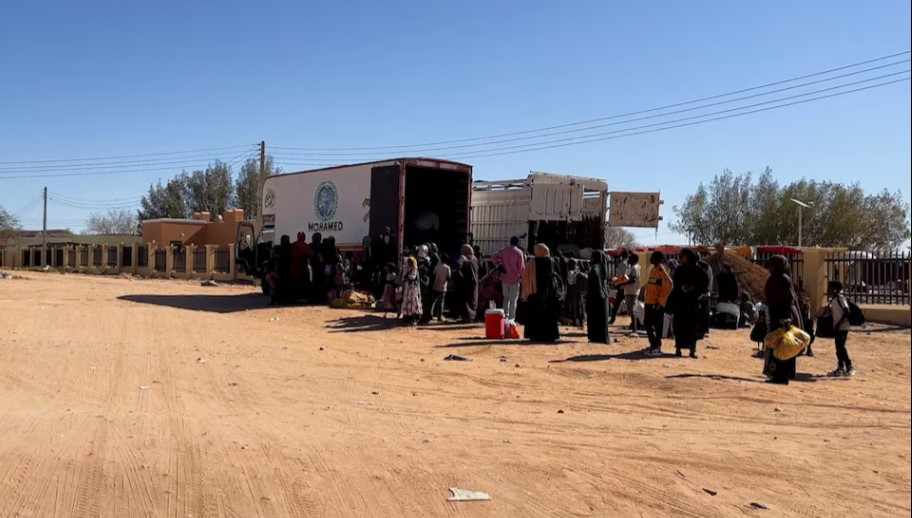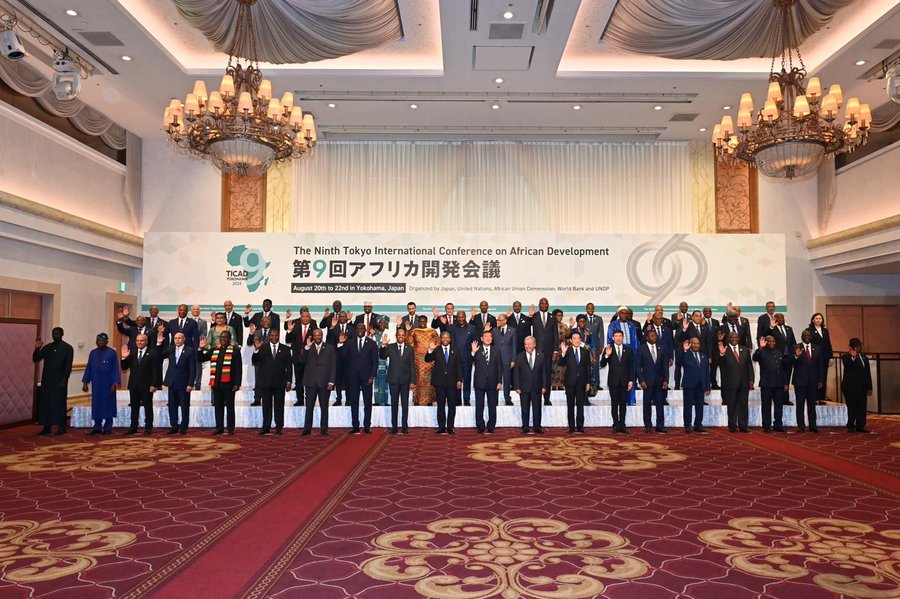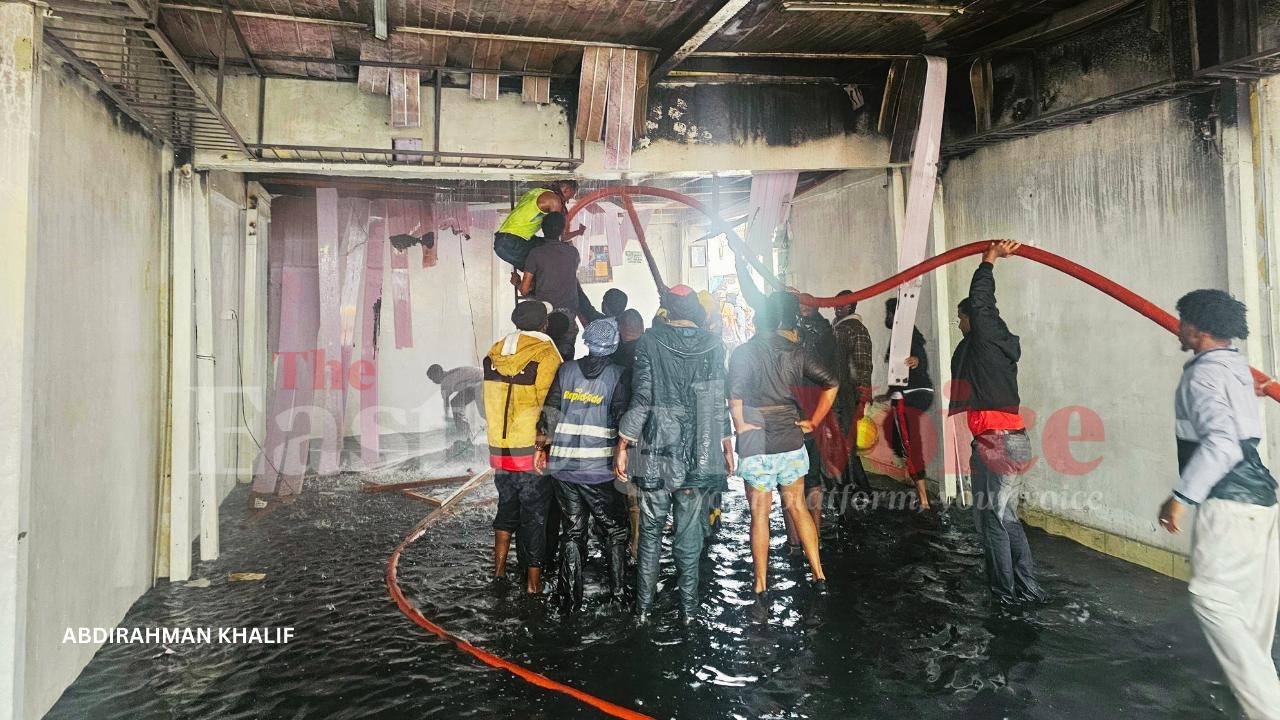Sudan conflict fuelling mass refugee exodus, human trafficking into neighbouring states

Kenya, South Sudan, Central African Republic, Uganda, and Ethiopia, are bearing the brunt of the increased movement of Sudanese nationals into their countries.
The ongoing conflict in Sudan is fuelling mass refugee movement and human smuggling into the neighbouring countries, including Kenya, where the refugee camps have been recording a rise in Sudanese nationals seeking asylum.
Data from the UNHCR shows that as of May 2024, 11,574 Sudanese had arrived in Kenya and settled at the Dadaab, Kakuma, and Kalobeyei camps, as well as in major urban towns of Nairobi, Eldoret, Nakuru, and Mombasa.
More To Read
- UNESCO urges dialogue as world marks day for remembrance of slave trade, abolition
- WFP aid convoy attacked in Sudan's North Darfur, food relief trucks torched
- Sudan government relocates ministries from war-ravaged Khartoum to safer cities
- Kenya tightens terrorism cases with mandatory terror-financing investigations
- Scribbled lines of life - hunger and hope in a Darfur city
- Sudan’s army chief Abdel Fattah al-Burhan reshuffles top command amid civil war
The conflict in Sudan began mid-April last year when fighting between the Rapid Support Forces (RSF) and the Sudanese Armed Forces (SAF) erupted during Ramadan, leading to extreme levels of displacement in the months that followed, with World Vision International labelling it as one of the largest emergencies in the world.
According to the Global Initiative Against Transnational Organised Crime, the conflict has since displaced nearly two million refugees into neighbouring countries and left over eight million others living as internally displaced persons by September 2024, with the conflict showing no signs of ending.
The organisation observes that the crisis has presented unique challenges, influencing broader patterns of human smuggling and mobility, particularly along its northern border with Egypt, Libya, and Chad.
Meanwhile, its neighbours, Kenya, South Sudan, Central African Republic, Uganda, and Ethiopia, are bearing the brunt of the increased movement of Sudanese nationals into their countries.
Migrant transit routes
In its new report, dubbed "Sudan conflict drives mass refugee movement and fuels human smuggling", the organisation notes that Egypt, Chad, and Libya provide transit routes that migrants aiming to reach Europe, Israel, or Gulf states rely on.
"The breakdown in security and governance in Sudan has destabilised the existing migration routes and hubs used by East Africans, especially hubs such as Khartoum and Omdurman. The bifurcation of the country's human smuggling systems between areas under RSF control and those under SAF control affects both the feasibility of movement and the routes taken. Deteriorating security may also create openings for increased movement of East African migrants through Sudan, although the potential for this and the routes used will depend heavily on territorial control and fighting between the SAF and the RSF," the report says.
The report states that widespread poverty and economic turmoil, exacerbated by exceptionally high inflation rates for over a decade, inform the quest to leave the country and the desire for better economic opportunities.
However, the report notes that cross-border movements from and through Sudan in 2023 overwhelmingly involved refugees fleeing conflict, rather than economic migrants seeking opportunities.
The UN High Commissioner for Refugees (UNHCR) had recorded the arrival of more than one and a half million people from Sudan, including refugees and returnees, in neighbouring countries by December 11, 2023.
When the movement increased, neighbouring countries, such as Egypt, imposed visa restrictions to ensure legal movement, triggering renewed activity by human smuggling networks, which sought to cater to those seeking to flee without proper documentation.
"Since 2023, the flow of refugees across the Sudan-Libya border has continued to increase, with a growing number of people arriving in Kufra from the Aweinat Mountain area. This concentration of movement is largely due to impediments to mobility along other routes, as legal access to Egypt becomes more difficult and violence in Darfur intensifies."
Sudanese nationals need a visa to enter Chad by air, but the report states that the Chadian authorities tolerated cross-border movements even before the war.
Today, however, for many migrants, the most direct route available is the road from al-Geneina in West Darfur to Adre in the Ouaddaï region of Chad.
Transportation cost
The report states that others have reported travelling to Adre via el-Geneina and Adikon, where the cost of transportation to the border has increased significantly since the conflict's outbreak in April. This route is considered risky due to the heavy presence of RSF personnel in the area.
Despite claims that the warring forces are aiding smugglers, it is believed that their continued focus on the war has facilitated the rise in smuggling, with perpetrators taking advantage of the lack of surveillance along the border.
"The conflict has also started to shape broader patterns of mobility throughout the Sahel and North Africa. While most Sudanese refugees remain in the countries where they initially sought safe haven — mainly Egypt and Chad — a growing number have begun to travel north to Libya and Tunisia before embarking for Europe," the report shows.
The conflict has also shaped the geographical trajectory of routes, with the report noting that before the war, greater Khartoum was the main hub of human smuggling activity: a destination for migrants coming from the Horn of Africa and a starting point for smugglers transporting people north to Libya or west to Chad.
This has now changed, as the grinding conflict in greater Khartoum has displaced these networks. In effect, the conflict lines have bifurcated Sudan's previously unitary human smuggling ecosystem, largely separating routes in the east and north of the country from those through the west. This has led to the development of divergent dynamics along the different routes.
In contrast to the large number of Sudanese seeking refuge in Egypt, arrivals in Libya, as recorded by international organisations throughout 2023, were extremely low.
However, field reports indicated that the number of refugees entering south eastern Libya was significantly higher than previously documented. In late June — two and a half months into the conflict — the head of the Directorate for Combating Illegal Migration (DCIM) Eastern Region in Kufra claimed that some 5,300 Sudanese had already arrived in the city.
"The growing surge in arrivals across this border has been even more pronounced in 2024. By the middle of the year, interviewees suggested that between 2,000 and 3,000 arrivals were occurring in an average week, with some peak periods recording over 1,000 arrivals in 48 hours," added the report.
According to Frontex data, by the end of December 2023, a total of 6,360 Sudanese migrants had disembarked in Italy from Libya and Tunisia. A further 1,280 had arrived in the EU using other routes.
"Although incomplete, this data shows that Sudanese arrivals more than tripled compared to 2022," the report notes.
Simultaneously, the mix of nationalities has also shifted; before the conflict, Sudanese, Ethiopians, Eritreans, and, to a lesser degree, Somalis shared the routes from Sudan to Libya.
"The conflict in Sudan appears to have largely halted the movement of East Africans, with one smuggler noting that his customers were now all Sudanese, with no Eritreans attempting the journey," it notes.
Smuggling networks transport refugees from various parts of Sudan north toward Dongola, usually in small vans or commercial buses.
From Dongola or Kerma, smuggling networks transport people by bus or in four-wheel-drive vehicles to Wahat Salima (also known as Wadi Salima). From there, smuggling networks transfer migrants and refugees to four-wheel-drive vehicles and transport them to either the al-Muthalath market or Saif al-Barli, located approximately 80 kilometres from the Libyan border. Commercial vehicles transport animals, food, and other goods to al-Muthalath.
Top Stories Today














































